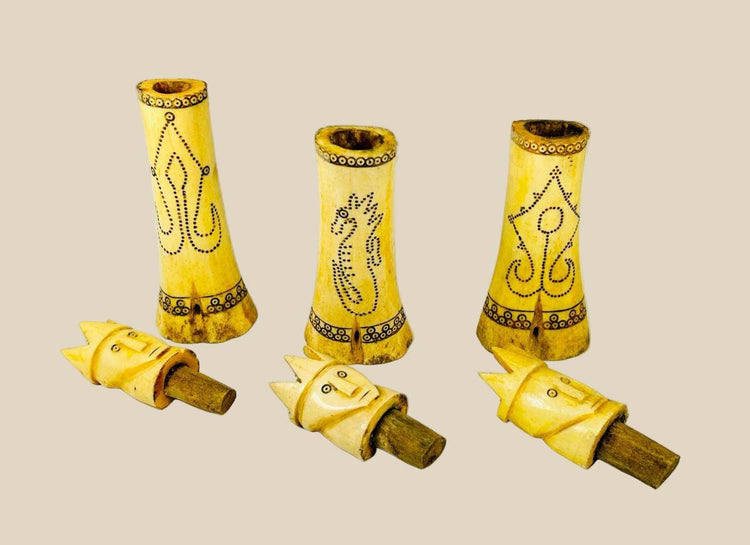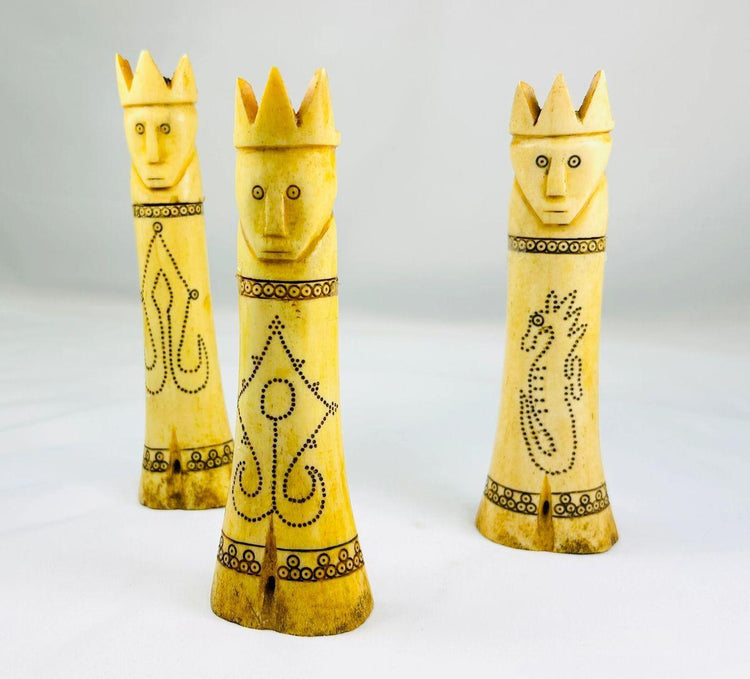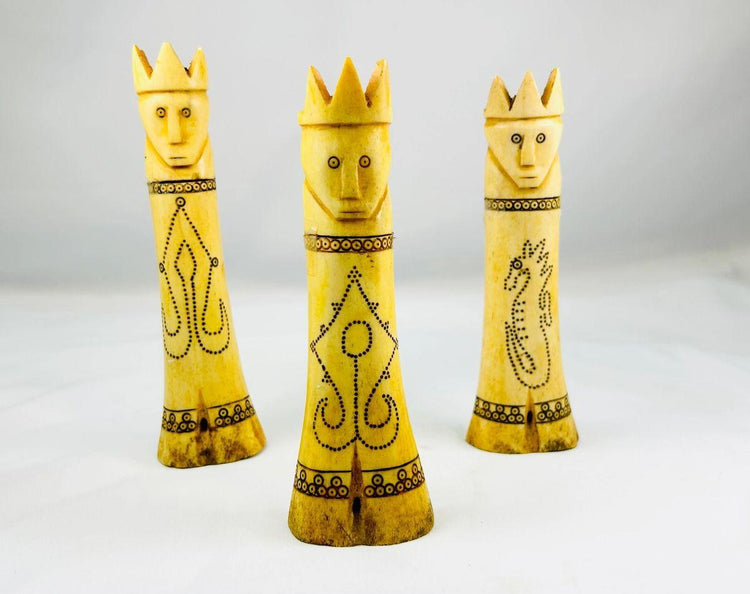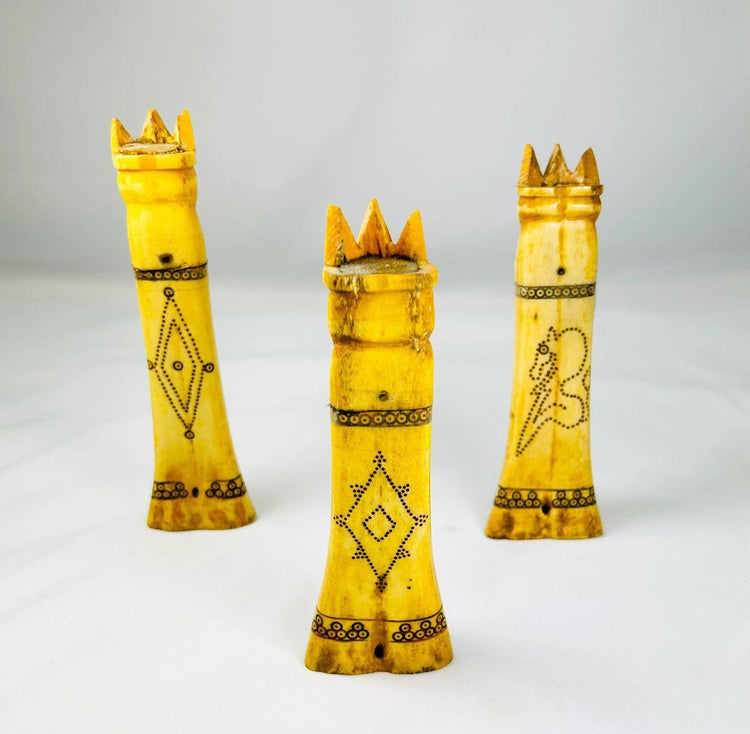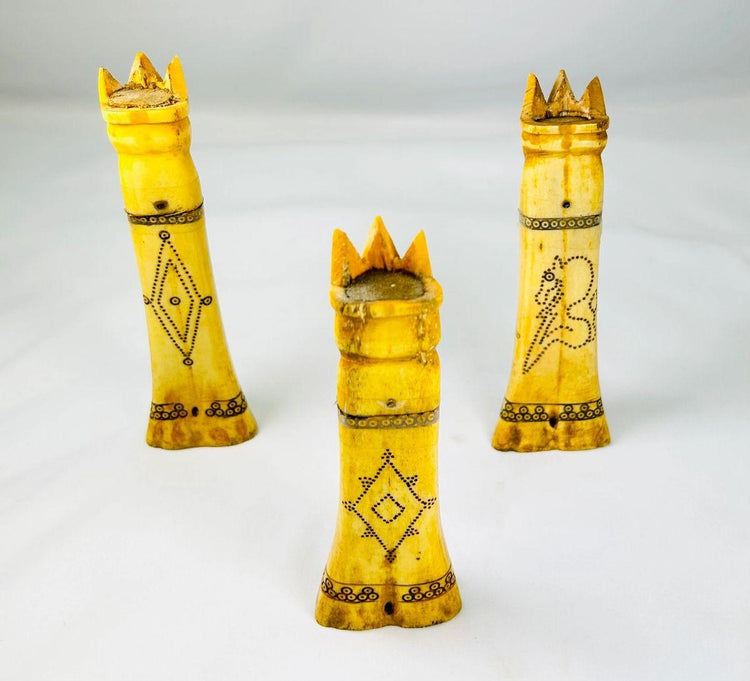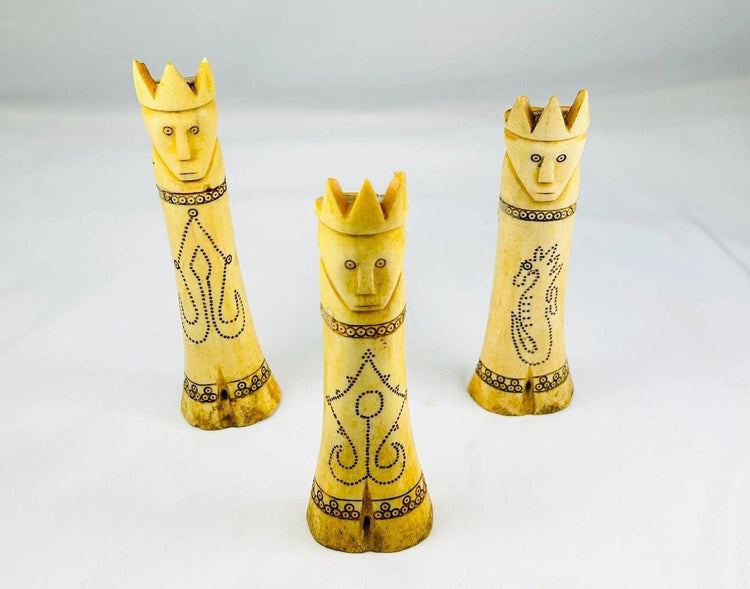Three Indonesian Carved Buffalo Bone Lime Containers | Early 20th Century
Description
More
Less
Historical Context & Origin
Region: Indonesia
Material: Carved buffalo bone
Period: Early 20th Century CE
Description
This set of three carved bone lime containers showcases the artistry and cultural richness of early 20th-century Indonesia. Each container is carefully crafted from buffalo bone and adorned with intricate scrimshaw patterns, incorporating geometric motifs and animal imagery. The lids are sculpted into crowned figures of royalty, emphasizing the ceremonial and symbolic importance of these objects. Traditionally, such containers were used for storing lime in the practice of betel nut chewing, a custom deeply embedded in Southeast Asian culture.
Features
- Intricate scrimshaw decoration with geometric and animal motifs
- Finely sculpted lids depicting crowned figures of royalty
- Natural bone patina enhancing depth and authenticity
- Functional storage containers with decorative and symbolic qualities
Cultural Significance
Lime containers were integral to the betel nut chewing tradition, a widespread cultural practice across Indonesia and Southeast Asia. Beyond their practical use, these containers also served as artistic expressions of status, identity, and ceremonial significance. The royal figures carved into the lids highlight the symbolic dimension of these objects, connecting them to themes of power and reverence in local culture.
Condition
The set is in excellent condition, with detailed scrimshaw engravings and carvings intact. The natural bone patina, developed over time, enhances their authenticity and aesthetic appeal.
Dimensions (approximate)
Height: 6.5 in (each)
Age
Early 20th Century CE
Description
Historical Context & Origin
Region: Indonesia
Material: Carved buffalo bone
Period: Early 20th Century CE
Description
This set of three carved bone lime containers showcases the artistry and cultural richness of early 20th-century Indonesia. Each container is carefully crafted from buffalo bone and adorned with intricate scrimshaw patterns, incorporating geometric motifs and animal imagery. The lids are sculpted into crowned figures of royalty, emphasizing the ceremonial and symbolic importance of these objects. Traditionally, such containers were used for storing lime in the practice of betel nut chewing, a custom deeply embedded in Southeast Asian culture.
Features
- Intricate scrimshaw decoration with geometric and animal motifs
- Finely sculpted lids depicting crowned figures of royalty
- Natural bone patina enhancing depth and authenticity
- Functional storage containers with decorative and symbolic qualities
Cultural Significance
Lime containers were integral to the betel nut chewing tradition, a widespread cultural practice across Indonesia and Southeast Asia. Beyond their practical use, these containers also served as artistic expressions of status, identity, and ceremonial significance. The royal figures carved into the lids highlight the symbolic dimension of these objects, connecting them to themes of power and reverence in local culture.
Condition
The set is in excellent condition, with detailed scrimshaw engravings and carvings intact. The natural bone patina, developed over time, enhances their authenticity and aesthetic appeal.
Dimensions (approximate)
Height: 6.5 in (each)
Age
Early 20th Century CE
You May Also Like


















